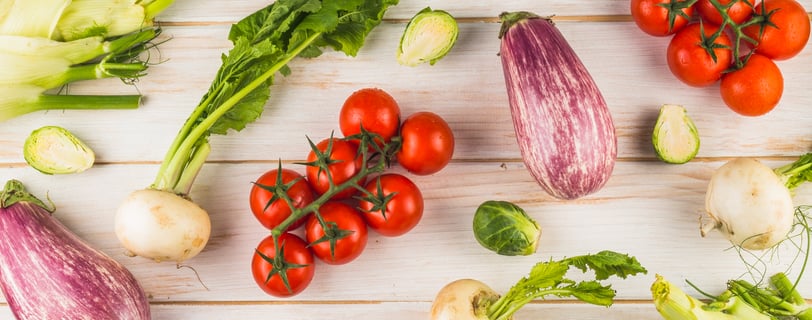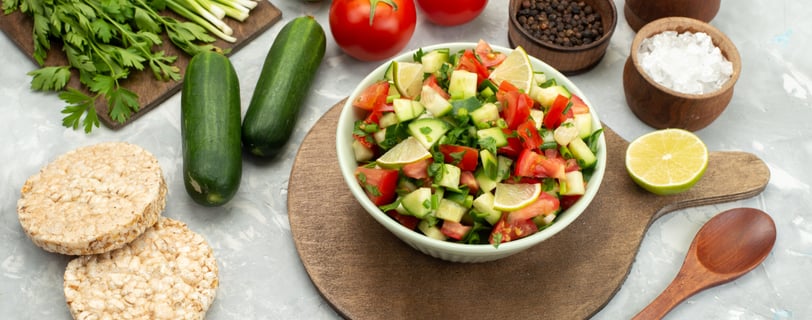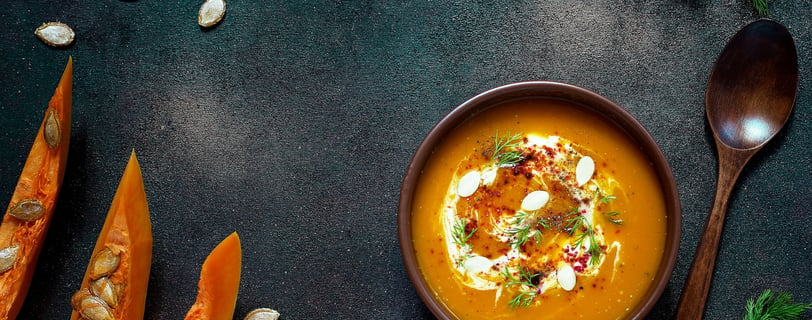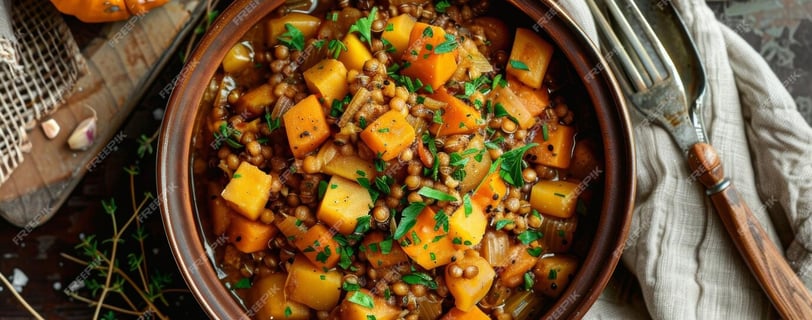Seasonal Eating: Embracing Nature’s Bounty with Fresh, Flavorful Recipes
Explore the benefits of seasonal eating and enjoy nature’s freshest flavors with delicious recipes. Learn how to eat with the seasons for better taste, health, and sustainability.
HEALTH & WELLNESS
11/2/20247 min read
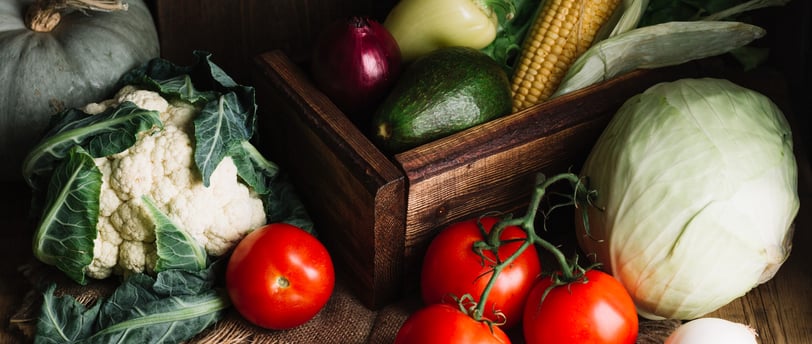

Seasonal Eating: Embracing Nature’s Bounty with Fresh, Flavorful Recipes
There’s something magical about eating foods that are in season—like biting into a juicy peach in the summer or cozying up with a bowl of roasted squash soup in the fall. Seasonal eating isn’t just for farmers' markets and gourmet chefs; it’s a simple way to reconnect with nature, enjoy better flavors, and even save a few bucks. Today, we’re diving into the benefits of eating with the seasons and sharing some irresistible recipes that highlight fresh, seasonal ingredients.
Why Seasonal Eating Matters: Benefits Beyond Flavor
If you’re new to seasonal eating, think of it as eating in sync with nature. When we choose produce that’s naturally at its peak, it’s not only tastier, but it’s also packed with more nutrients. Plus, it can be easier on your wallet and the planet. Here’s a deeper look at why seasonal eating is worth trying.
1. Better Flavor (Your Taste Buds Will Thank You)
Ever tasted a tomato in the middle of January? It’s often bland and watery. But come summer, those same tomatoes are bursting with flavor, color, and juiciness that’s hard to beat. When fruits and veggies are allowed to ripen in their natural season, they reach their peak flavor. It’s nature’s way of saying, “Here, enjoy!”
Pro Tip: Next time you’re shopping, think of seasonal produce as nature’s freshest picks of the month. You’ll notice a world of difference in taste and quality!
2. Nutritional Powerhouse
Eating seasonally isn’t just delicious—it’s healthy too. When produce is harvested at the right time, it’s packed with vitamins and minerals that your body craves. That January tomato we talked about? It’s often picked before it’s ripe and shipped long distances, which can lead to nutrient loss. So, when you eat seasonally, you’re maximizing the nutritional bang for your bite.
Fun Fact: Studies show that broccoli harvested in season can contain nearly twice as much vitamin C as out-of-season broccoli. So, you’re not only treating your taste buds, but you’re also giving your body a boost.
3. Eco-Friendly Choice
Seasonal eating is a more sustainable choice for the planet. Out-of-season produce often travels long distances before it hits your grocery store, which means more carbon emissions from transportation. Eating seasonally usually means eating locally, reducing the need for long-haul transport and cutting down your carbon footprint.
Pro Tip: Farmers’ markets are your best friend! You’ll find local, in-season produce, and you’re supporting local farmers in the process. Plus, it’s a great place to try new foods you might not find in the supermarket.
4. Wallet-Friendly Options
When produce is in season, it’s also more abundant. And with abundance comes lower prices. For example, you might notice that strawberries are cheaper in the summer when they’re at their peak, but they can be pricey in the winter. So, by shopping seasonally, you’re eating fresher and saving money.
Quick Hack: When you find great deals on seasonal produce, consider freezing or canning extras. Fresh berries, for instance, freeze beautifully and can be enjoyed year-round in smoothies or desserts.
Seasonal Produce Guide: What’s in Season?
Each season offers its own special selection of fruits and vegetables. Let’s break it down, so you know what to look for throughout the year.
Spring: Think fresh, green, and light. Look for asparagus, peas, strawberries, radishes, and leafy greens. Spring produce is perfect for salads, light sautés, and dishes that feel refreshing after winter’s hearty meals.
Summer: Hello, juicy and colorful! Tomatoes, zucchini, berries, corn, and watermelon are summer’s gifts to us. These are great for grilling, adding to fresh salads, or simply enjoying on their own.
Fall: Cozy, earthy flavors take center stage. Apples, pumpkins, sweet potatoes, Brussels sprouts, and squash are everywhere. Fall produce is ideal for roasting, baking, and creating those warm, comforting dishes.
Winter: Citrus and hearty veggies make winter a little brighter. Think oranges, lemons, kale, leeks, and root vegetables like carrots and beets. Winter produce is fantastic for soups, stews, and casseroles that warm you from the inside out.
If you’re curious about what’s in season near you, check out local resources or farmers’ market guides—they’ll give you the freshest insights.
Delicious Seasonal Recipes to Try
Now that we’ve covered the benefits, let’s get into the kitchen! Here are some recipes that highlight seasonal produce in fun, flavorful ways. Each recipe celebrates the best of each season, so you can enjoy nature’s bounty all year long.
Spring Vegetable Quiche with Fresh Herbs
Celebrate spring with this light and savory quiche filled with fresh, seasonal vegetables and fragrant herbs. Perfect for brunch, lunch, or a simple dinner, this quiche is packed with asparagus, baby spinach, and leeks for a true taste of the season.
Ingredients:
1 pre-made pie crust (or homemade if you prefer)
1 tablespoon olive oil
1 leek, thinly sliced
1 cup asparagus, cut into 1-inch pieces
1 cup baby spinach
4 large eggs
1 cup half-and-half or whole milk
1/2 cup grated Gruyere or Swiss cheese
2 tablespoons fresh chives, chopped
1 tablespoon fresh dill, chopped
Salt and black pepper to taste
Instructions:
Preheat your oven to 375°F (190°C). Place the pie crust in a 9-inch pie dish and set aside.
In a skillet, heat olive oil over medium heat. Add the leeks and sauté for 3-4 minutes until softened.
Add the asparagus and cook for another 2-3 minutes until just tender. Stir in the baby spinach and cook until wilted. Remove from heat.
In a bowl, whisk together the eggs, half-and-half, salt, and black pepper. Stir in the cheese, chives, and dill.
Spread the sautéed vegetables evenly over the pie crust. Pour the egg mixture over the vegetables, ensuring everything is well-distributed.
Bake for 30-35 minutes or until the center is set and the top is golden.
Let the quiche cool for 10 minutes before slicing and serving.
Pro Tip: Serve with a side salad of mixed greens and a light vinaigrette for a complete springtime meal.
Chef’s Note: You can customize this quiche with other spring vegetables such as peas or artichokes if desired.
Summer Harvest: Tomato and Zucchini Salad
Summer is all about simplicity. This no-cook salad brings together the bold flavors of ripe tomatoes and fresh zucchini, with a tangy balsamic dressing to tie it all together.
Ingredients:
2 large tomatoes, sliced
1 medium zucchini, thinly sliced
1/4 cup fresh basil leaves
2 tablespoons balsamic vinegar
2 tablespoons extra-virgin olive oil
Salt and pepper to taste
Instructions:
Arrange tomato and zucchini slices on a large plate, alternating for a colorful display.
Tuck fresh basil leaves between the slices.
Drizzle with balsamic vinegar and olive oil, then season with salt and pepper.
Let the salad sit for a few minutes so the flavors can meld together before serving.
Pro Tip: Add a sprinkle of crumbled feta or mozzarella for a creamy, salty touch. It’s summer on a plate!
Fall Comfort: Roasted Pumpkin and Sweet Potato Soup
When autumn rolls around, it’s all about the cozy, warm meals. This roasted pumpkin and sweet potato soup is rich, creamy, and full of earthy flavors that make you feel right at home.
Ingredients:
1 small pumpkin, peeled, seeded, and cubed
1 large sweet potato, peeled and cubed
1 onion, chopped
2 cloves garlic, minced
4 cups vegetable broth
1/2 cup coconut milk
2 tablespoons olive oil
1 teaspoon ground cumin
Salt and pepper to taste
Instructions:
Preheat oven to 400°F. Toss pumpkin and sweet potato cubes in olive oil, salt, and pepper. Roast for 25-30 minutes until soft.
In a large pot, sauté onion and garlic until soft.
Add roasted pumpkin, sweet potato, cumin, and vegetable broth. Bring to a boil, then simmer for 10 minutes.
Puree with an immersion blender until smooth. Stir in coconut milk and adjust seasoning.
Serving Tip: Top with roasted pumpkin seeds and a drizzle of extra coconut milk. Perfect for crisp fall days!
Winter Warm-Up: Spiced Lentil and Sweet Potato Stew
This hearty lentil and sweet potato stew is packed with warming spices and nutrient-rich ingredients. It’s the perfect bowl to cozy up with on a chilly winter evening.
Ingredients:
1 cup red or green lentils, rinsed
2 tablespoons olive oil
1 onion, diced
2 cloves garlic, minced
1 sweet potato, peeled and cubed
2 carrots, sliced
4 cups vegetable broth
1 teaspoon cumin
1/2 teaspoon cinnamon
1/2 teaspoon smoked paprika
Salt and black pepper to taste
Fresh cilantro or parsley for garnish
A squeeze of lemon (optional)
Instructions:
Heat olive oil in a large pot over medium heat. Add the diced onion and sauté for 3-4 minutes until translucent. Add the garlic and cook for another minute.
Stir in the cumin, cinnamon, and smoked paprika, letting them bloom for about 30 seconds to release their flavor.
Add the sweet potato, carrots, lentils, and vegetable broth. Bring to a boil, then reduce the heat and let simmer for 25-30 minutes or until the lentils and vegetables are tender.
Season with salt, black pepper, and a squeeze of lemon juice for added brightness.
Serve hot with a garnish of fresh cilantro or parsley.
Pro Tip: Pair this stew with crusty bread or naan for an extra cozy meal.
Embrace the Rhythm of the Seasons
Seasonal eating brings variety, freshness, and joy to our meals. It connects us to the natural cycle of growth, helping us appreciate the beauty of each season’s bounty. Whether you’re shopping at a local farmers’ market or exploring new recipes, let the seasons guide your plate. Who knew eating well could feel so… natural?
